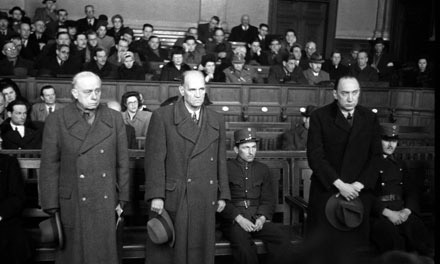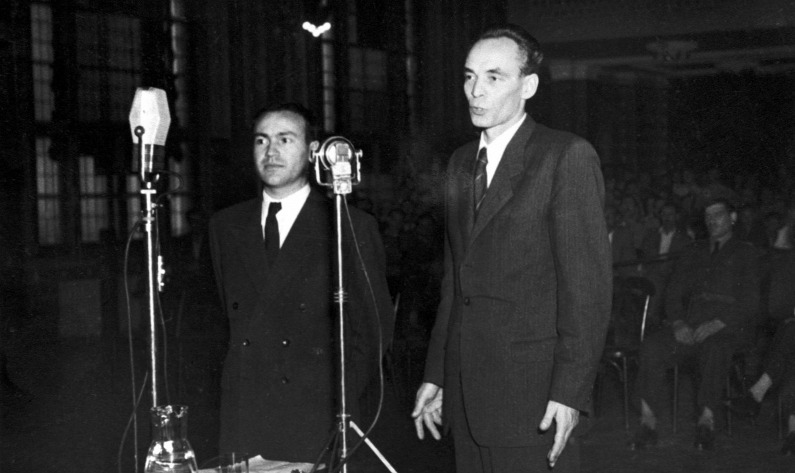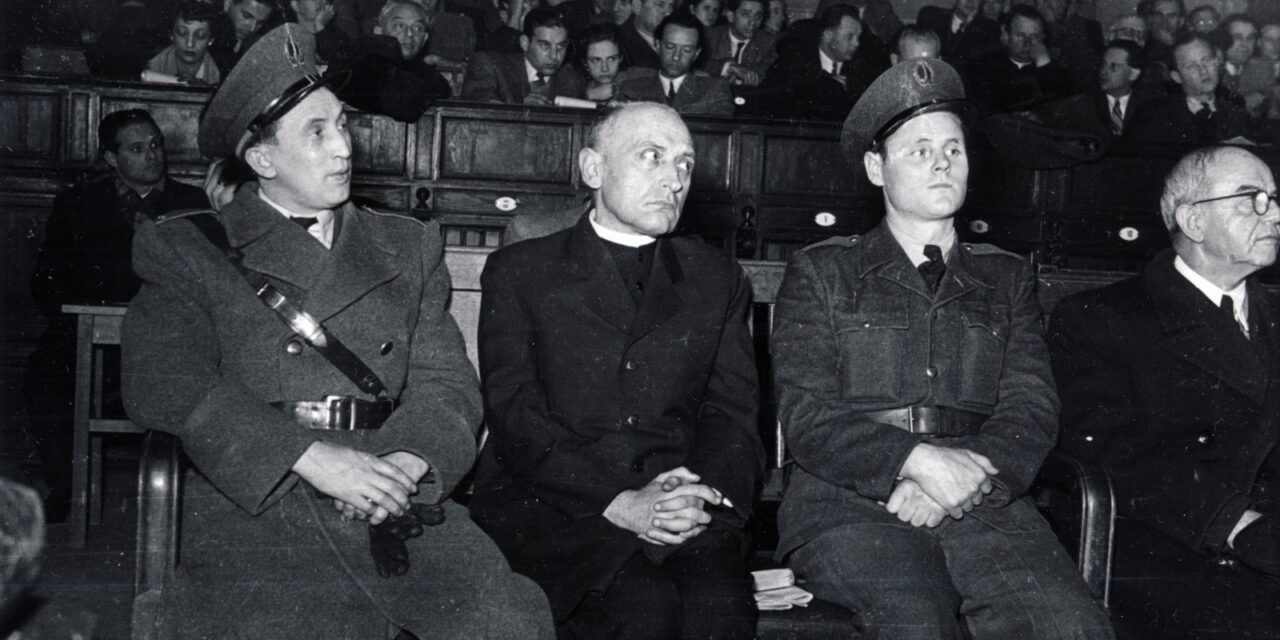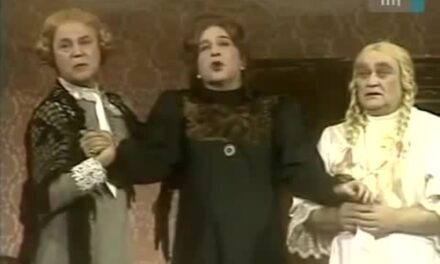The work of the Civil Justice Committee, founded by CÖF-CÖKA, basically involves the presentation of crimes committed during communism that have not yet been investigated and thus remained without consequences. Zsolt Zétényi's study is about the rampage of communist terror and the victims of communists.
Victims of "Justice"
during the period of the Soviet military occupation between 1944-1990, the suspension of constitutionalism.
At that time, 363 were executed by communist-specific law enforcement organizations, actually criminal institutions, on the basis of so-called court decisions, in connection with the commission of war crimes and crimes against the people, 538 were executed for political crimes, and the remaining 329 are the number of public executions. This list is correct if the convictions for the crimes listed below exhaust the entire range of political convictions.
In the case of the available 1,232 executed persons (regardless of the perceived or real nature of anti-state (political) crimes, because not everyone's relatives could request the issuance of a certificate of nullity established by ex lege, and the majority were not in a position to initiate effective extraordinary legal remedies), it can be recorded, that between February 4, 1945 and July 14, 1988 (in addition to those executed in connection with the commission of 363 war crimes and crimes against the people), the following people were killed:
1 for armed conspiracy,
1 for leading a movement against the people's democratic state order, 1 for
organizing, 252
for disloyalty,
1 for providing military and economic data,
3 for attempted illegal border crossing,
48 for hiding weapons and ammunition, 1
for misuse of firearms, 1
for misuse of explosives.

image source: Hungarian Photo Archive
1944-1956. The first decade of the second communist terror
The Hungarian Communist Party announced at the very beginning that it wanted to organize and lead the police, as well as the position of Minister of the Interior. In the Provisional National Government (from December 22, 1944 to November 5, 1945), the peasant Ferenc Erdei was still the Minister of the Interior, but from November 15, 1945, the Ministry of the Interior operated under communist leadership. In the Tildy government, Imre Nagy until February 4, 1946, Ferenc Nagy , and then in the government of Lajos Dinnyés László Rajk until August 5, 1948, who János Kádár until June 23, 1950. Sándor Zöld, Árpád Házi and József Győré followed for a short time in the line of communist interior ministers Ernő Gerő Nagy was replaced by László Piros from July 6, 1954 . until October 24.
Regardless of its organizational affiliation, the ÁVO operated from the beginning under the direct control of Mátyás Rákosi, which Gábor Péter did not hide when even the representatives of the coalition parties were given positions in the leadership of the Ministry of the Interior and the police departments. Mátyás Rákosi to prosecute the state terrorist organization operating under the direct control of the leaders of the Communist Party, as well as the leaders who carried out the instructions . The criminal record of the party's terrorist organization would be difficult to compile. Between 1945 and 1953, almost all political crimes - strengthening the personal power of the Communist Party and Rákosi - were prepared, organized and carried out by the ÁVO, ÁVH.

The MAORT trial (image source: Hír tv)
The series of political crimes committed by the terrorist organization during the coalition period (1946-1948) became clearly visible with the "liquidation" of political opponents. b) The most significant cases organized by ÁVO, ÁVH: - use of certification and B-listing to expel political opponents from public life; – beatings and tortures used during the preparation of people's court proceedings; – the preparation and conduct of the Hungarian Brotherhood trial (through the cooperation of the ÁVO, Katpol. and Soviet bodies) and, as a result, the destruction of the FKGP; – Hungarian Community Trials, execution of György Donáth Ferenc Nagy , as a result of which he resigned from his position as Prime Minister and remained abroad (in May 1947); of the General Secretary of the FKGP, Béla Kovács, to the Soviet Union in 1947; – Zoltán Tildy's resignation in 1948 and his detention under house arrest; – concept trials organized in order to expropriate foreign capital, such as the Hungarian-American Oil Joint Stock Company (MAORT) case, in which the charge was "sabotage directed by the Americans and carried out with the help of their Hungarian accomplices"; the Standard case, according to which production was deliberately reduced at the Hungarian subsidiary of the American company; - the preparation and organization of the "blue card" election fraud of 1947 ; – the intimidation of the churches in Hungary, the "fight against the clerical reaction", the conceptual trials, interrogations and tortures conducted in the context of this in the case of church leaders ( trials against Catholic archpriests József Mindszenty and József Grősz – the series of mindless purges, showdowns and trials within the Communist Party: the trial and execution of László Rajk, György Pálffy, László Sólyom, Kálmán Révay beating the Szűcs brothers to death; The torture of István Ries to death and the so-called social democratic trials, the trials of Árpád Szakasits, György Marosán , and János Kádár ; Gábor Péter, Jolán Simon (Gábor Péter's wife), Gyula Décsi (Péter Gábor's former deputy), István Tímár, András Bárd, István Szirmai were arrested on January 3, 1953 by the ÁVH and the party's apparatus, as well as the leaders of JOINT and the Israelita Hitközség as Zionist conspirators.
The organization of political terror was directly by Mátyás Rákosi , Ernő Gerő and Mihály Farkas . The most important executive organization of the totalitarian party power was the State Defense Department, later the State Defense Authority, which was organized within the Ministry of the Interior and later emerged from it. In its heyday, it had a staff of about 30,000-40,000 people and kept records and prepared reports on about 1.5 million citizens.
On the basis of the four Prime Minister's decrees passed into law, over four years from February 4, 1945 to February 1, 1949, 160 people were executed in the capital and 189 people nationwide for committing war crimes and crimes against the people. Two distinct groups stand out. Most of the executions – 78 people – were carried out due to their participation, to varying degrees, in the largely mass murders committed by the Crusaders after they came to power.
With the additional executions, high-ranking leaders of various armed organizations were hit, as well as their colleagues working alongside them in various positions, both minor and major. Among them are professional soldiers, gendarmes and police officers, whose ranks range from colonel to corporal. There were those who had nothing to do with the previous aggressive acts against the Jews. During the criminal proceedings conducted against well-known government leaders, in the indictments and the pronounced sentences, the emphasis was not placed on what happened during the Holocaust."
……….Six enacted nullity laws were necessary to remedy what was committed against the citizens of Hungary between 1945 and 1989 by mocking the law and trampling on their human freedom.
VII of 1946 on the protection of the democratic state order and the republic. following the law popularly known as the "executioner's law" (on the criminal law protection of the democratic state order and the republic) , nearly 42,679 people were sentenced until 1956, the vast majority of them here already clearly within the framework of a conceptual procedure, for party orders. In 253 cases, the criminal law classification applied to the executed corresponds to the facts of the Executioner's Act.

The comrades also settled with each other - László Rajk (right) in front of the court (photo: MTI/Hámor Szabolcs)
"According to the - by no means complete - data from the end of 1962, in the law-breaking lawsuits initiated against the so-called labor movement people - Rajk, Sólyom, "SZDP", Kádár, Szűcs and Péter, and in many individual cases - 850 people 360 of them were interned. 28 out of 418 defendants were executed in a political trial , 69 were sentenced to life imprisonment, 59 were sentenced to 15 years in prison, 48 were sentenced to 10 years in prison, 144 were sentenced to 5-10 years in prison, and 65 defendants were sentenced to less than 5 years in prison. The proceedings against 65 people were terminated, five persons were acquitted by the courts.
In addition to those executed, two people committed suicide, five died during the investigations, 15 people died in prison after their final verdict, and six in the internment camp.
Among the relatives - according to far from accurate data - two committed suicide, four were banned, seven were displaced, one was placed under police supervision, 16 were expelled from the MDP, seven were dismissed from their jobs, 13 were demoted, and 13 were retired."
Historically, the 11 years up to 1956 were the first – and at the same time the harshest – period of concept lawsuits in Hungary.
(to be continued)
Author: lawyer Zsolt Zétényi
(Header image: Fortepan)













